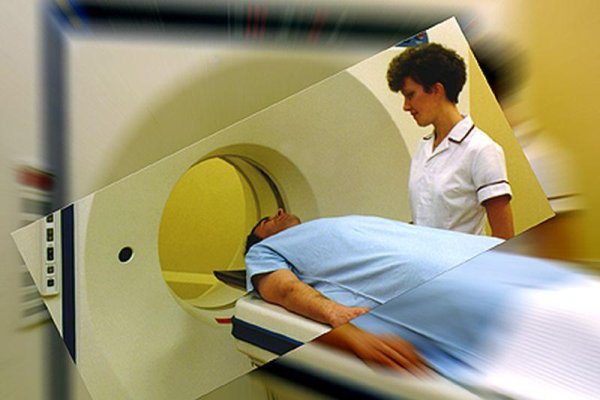Medical imaging technologies, notably Computed Tomography (CT) and Magnetic Resonance Imaging (MRI), offer critical insights into human anatomy and pathology. However, an important discourse has emerged regarding the potential dangers associated with the excessive use of such scans, which warrants thorough examination. This article will delineate the risks involved with frequent imaging, elucidate the inherent radiation exposure risks associated with CT scans, and discuss the relevance of MRI scans given their contrasting mechanisms.
Understanding CT and MRI Scans
CT scans utilize ionizing radiation to produce detailed cross-sectional images of the body. This aspect is key, as radiation exposure accumulates over time and can heighten the risk of oncogenesis. In contrast, MRI employs strong magnetic fields and radio waves, posing no ionizing radiation risk; however, it encompasses its own unique burdens, such as claustrophobia and the necessity for contrast agents, which can lead to nephrotoxicity in certain patient populations.
The Dose-Response Relationship
One of the foremost concerns surrounding CT scans is the dose-response relationship inherent to ionizing radiation. Studies have established that a single CT scan can expose an individual to the equivalent radiation of several hundred chest X-rays. Repeated exposure can significantly increase lifetime risk for developing radiation-induced malignancies. Epidemiological studies have documented correlations between cumulative radiation doses and incidences of cancers, especially in younger populations who are more susceptible to the carcinogenic effects of radiation due to their longer life expectancy.
Potential Risks of Overexposure
The risks of overexposure to CT scans extend beyond carcinogenic outcomes. Acute radiation syndrome, though rare, may manifest after high-dose exposures. Moreover, patients might experience heightened anxiety regarding their health due to frequent imaging, creating a psychological burden that can ultimately lead to further unnecessary scans. The phenomenon of “radiology overload” suggests that excessive diagnostic imaging can foster a culture of overtreatment, where findings from previous scans propagate a cascade of more imaging procedures rather than astute clinical judgments.
MRI Scan Implications
While MRI scans lack the harmful ionizing radiation associated with CT, practitioners must carefully consider the safety of contrast agents used during these procedures. Gadolinium-based contrast agents can pose significant risks to patients with preexisting renal insufficiency, leading to nephrogenic systemic fibrosis, a severe condition characterized by fibrosis of the skin and internal organs. Consequently, the prudent use of contrast agents is integral to mitigate risks without forfeiting diagnostic efficacy.
Cost-Benefit Analysis in Imaging
In the realm of patient care, a meticulous cost-benefit analysis must be performed prior to recommending either CT or MRI scans. Healthcare practitioners are tasked with reassuring patients while guarding against unnecessary imaging. A thorough clinical assessment should precede imaging requests, with a keen understanding of the clinical necessity informed by guidelines. The American College of Radiology and the Radiological Society of North America provide resources aimed at promoting the judicious use of imaging, underscoring the importance of appropriate indications for CT and MRI orders.
Chronic Conditions and Surveillance Imaging
Patients with chronic conditions often find themselves in a cycle of surveillance imaging, with the intent of monitoring disease progression. For instance, cancer patients may undergo repeated imaging to assess treatment responses. While the intention here is positive, and the imaging serves a legitimate clinical purpose, the accumulated radiation exposure from serial CT scans can still raise concerns about potential long-term ramifications. Hence, the principle of ‘as low as reasonably achievable’ (ALARA) should govern imaging protocols, ensuring that the frequency of scans aligns prudently with clinical requirements.
Advancements in Imaging Technologies
Emerging advancements in imaging technologies hold promise for mitigating some of the risks linked to frequent scans. Innovations in low-dose CT techniques utilize algorithms that decrease radiation exposure without compromising image quality. Furthermore, research into alternative imaging modalities, such as ultrasound and molecular imaging, offers potentially safer options with no ionizing radiation. Continuous education within the medical community about these technological advancements is vital, ensuring that practitioners remain informed about the best tools available for each unique clinical scenario.
Conclusion
The benefits of CT and MRI imaging are undeniable; they are indispensable tools in clinical diagnosis and management. However, the perils associated with excessive scanning must not be overlooked. The medical community must strike a delicate balance, wielding advanced imaging technologies while exercising judicious restraint to safeguard patient well-being. By prioritizing informed clinical decisions, educating patients, and advocating for appropriate imaging practices, healthcare providers can promote a health care approach that is both effective and responsible, minimizing risks while maximizing the benefits of imaging technology.












